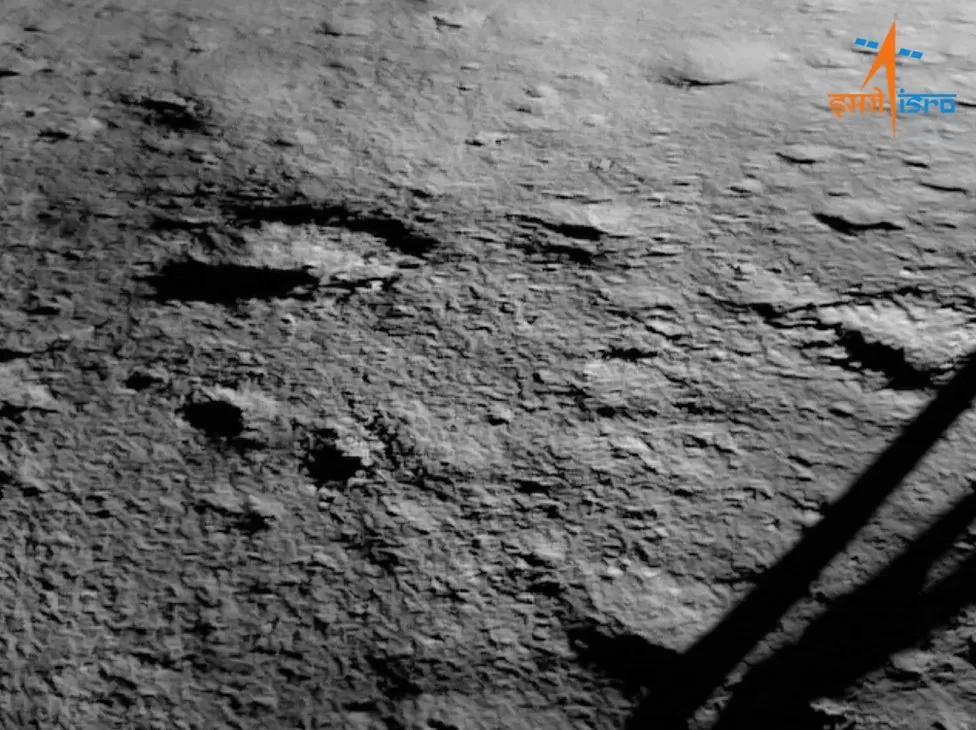India lunar rover Pragyaan takes a walk on the Moon

A day after landing near the south pole, India’s Moon rover took its first steps on the lunar surface.
The space agency said Chandrayaan-3’s rover “ramped down” from the lander, and “India took a walk on the Moon!”
As planned, the Vikram lander touched down on Wednesday evening.
India joins the US, the former Soviet Union, and China in achieving a soft landing on the Moon.
Vikram’s belly carried Pragyaan (the Sanskrit word for wisdom), a 26kg rover.
The panels on one side of Vikram opened after last evening’s landing to deploy a ramp to allow Pragyaan to reach the lunar surface.
The robot will now roam the rocks and craters, gathering crucial data and images that will be sent back to Earth for analysis.
In Pragyaan, two scientific instruments will be used to study the composition of the soil and the minerals present on the lunar surface.
Pragyaan will only communicate with the lander, which will send the information to Chandrayaan-2, which is still orbiting the Moon.
It will move at a speed of 1cm per second, and it will leave on the Moon’s surface the imprint of Isro’s logo and emblem embossed on its six wheels.
As the landing coincides with the start of a lunar day, the lander and rover will have 14 days of sunlight to charge their batteries.
As soon as night falls, they will discharge and stop working. When the next lunar day begins, it is unclear whether they will return to life.
A number of scientific instruments will also be carried by the lander, which will assist in gaining a better understanding of what happens on the Moon’s surface and above and below it.
One of the primary goals of Chandrayaan-3 is to search for water – scientists estimate that the huge craters in the south pole region, which are permanently in shadow, could hold ice that could support human habitation on the Moon in the future.
It could also be used to supply propellant to spacecraft headed for Mars and other distant destinations. During the lander’s precarious descent, tense moments preceded touchdown. From 1.68km per second to almost zero, the lander’s speed gradually decreased, allowing it to land softly.
Prime Minister Narendra Modi said “India is now on the Moon” and that “we have reached a place that no other country has been able to reach.”.
Just days earlier, Russia’s Luna-25 spacecraft spun out of control.
A crash also brought attention to the difficult terrain of the south pole region, where the surface is “very uneven” and “full of craters and boulders”.
In 2019, India attempted to soft-land on the moon again, but its lander and rover were destroyed, while its orbiter survived. Even today, it is helping the Vikram lander send images and data to Earth.
India is not the only country interested in the Moon – many other missions are headed to the lunar surface in the near future. Scientists say there is still much to learn about the Moon, which is often referred to as a gateway to deep space.
